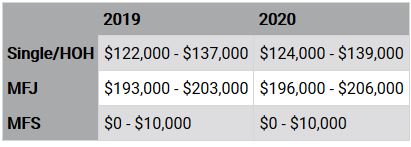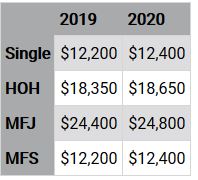The CARES Act provided businesses with an employee retention tax credit for wages paid from March 12, 2020 to January 1, 2021. Businesses that received a PPP loan were not able to utilize the employee retention tax credit. This Act extends, expands, and modifies the employee retention tax credit. Some changes are effective retroactively to 2020 and some changes are only for 2021.
Changes Retroactive to 2020
The most significant retroactive change is that businesses that received a PPP loan can also take advantage of the employee retention credit. However, the same wages cannot be used to qualify for both the employee retention credit and forgiveness of a PPP loan. The Internal Revenue Service and Treasury Department must issue guidance on this provision before it can be put into effect.
The other significant retroactive change is that healthcare expenses are now eligible to be treated as wages, even if the employee was not receiving other wages (for example, if he/she was furloughed).

To summarize the original employee retention tax credit: Employers were eligible for the credit if they met one of two tests and did not receive a PPP loan:
1) Operations were fully or partially disrupted because of a government order limiting commerce and travel as a result of COVID-19.
2) Gross receipts for a quarter in 2020 were less than 50% of gross receipts for the same quarter in 2019, with eligibility ceasing following a quarter where gross receipts were greater than 80% of the previous year.
Businesses with over 100 employees could only take the credit for wages paid to employees who were furloughed or faced reduced hours as a result of the coronavirus. Businesses with 100 or fewer employees could take the credit for all paid wages. The retention credit was calculated by taking 50% of qualified wages for each employee during the eligible period of March 12, 2020 to January 1, 2021. The maximum wage amount used for the credit is $10,000 for that period, meaning the credit cannot exceed $5,000 per employee.
The credit was used against the employer’s share of Social Security payroll taxes. If the credit for the quarter exceeded that amount, the excess was treated as a tax overpayment and was refunded to the employer.
Changes for 2021
The Act makes a number of substantial enhancements to the employee retention credit for 2021:
The employee retention credit is extended through June 30, 2021.
![]() The amount of wages eligible for the credit are $10,000 per employee per quarter (compared to $10,000 for all of 2020).
The amount of wages eligible for the credit are $10,000 per employee per quarter (compared to $10,000 for all of 2020).
![]() The credit percentage is increased from 50% of wages to 70% of wages. Thus, the maximum credit per employee is $7,000 per quarter or $14,000 for 2021. The maximum credit in 2020 was $5,000 per employee.
The credit percentage is increased from 50% of wages to 70% of wages. Thus, the maximum credit per employee is $7,000 per quarter or $14,000 for 2021. The maximum credit in 2020 was $5,000 per employee.
![]() A small employer is defined as one with up to 500 employees, up from 100 employees in 2020.
A small employer is defined as one with up to 500 employees, up from 100 employees in 2020.
![]() To qualify for the credit, gross receipts must decline by more than 20% (down from 50%) when comparing either the calendar quarter or the prior quarter to the corresponding quarter in 2019 or the employer must be fully or partially shut down by government order. For example, an employer may be eligible for the first quarter of 2021 if either its gross receipts for the first quarter of 2021 fell by more than 20% when compared to the first quarter of 2019 or its gross receipts for the fourth quarter of 2020 fell by more than 20% when compared to the fourth quarter of 2019.
To qualify for the credit, gross receipts must decline by more than 20% (down from 50%) when comparing either the calendar quarter or the prior quarter to the corresponding quarter in 2019 or the employer must be fully or partially shut down by government order. For example, an employer may be eligible for the first quarter of 2021 if either its gross receipts for the first quarter of 2021 fell by more than 20% when compared to the first quarter of 2019 or its gross receipts for the fourth quarter of 2020 fell by more than 20% when compared to the fourth quarter of 2019.
![]() Advance payment of this credit is allowed only in cases of small employers with fewer than 500 employees and only up to 70% of the average quarterly wages paid in 2019.
Advance payment of this credit is allowed only in cases of small employers with fewer than 500 employees and only up to 70% of the average quarterly wages paid in 2019.
Frankly Speaking
The animal characters Walt Kelly created for his classic newspaper comic strip Pogo were known for their seemingly simplistic, but slyly perceptive comments about the state of the world and politics.
None is better remembered than Pogo the ‘possum’s quote to help promote environmental awareness and publicize the first annual observance of Earth Day, April 22, 1970:
“WE HAVE MET THE ENEMY AND HE IS US.”
Sounds like Pogo may have been foreshadowing recent events. We all have an opinion of who was in the right Jan. 6, but were they of the Right or Left, and how far Right or Left? Pogo’s comment of 50 years ago seems to have come home to roost.
If you or someone you know wants to consider ESG investing, call or contact me!











